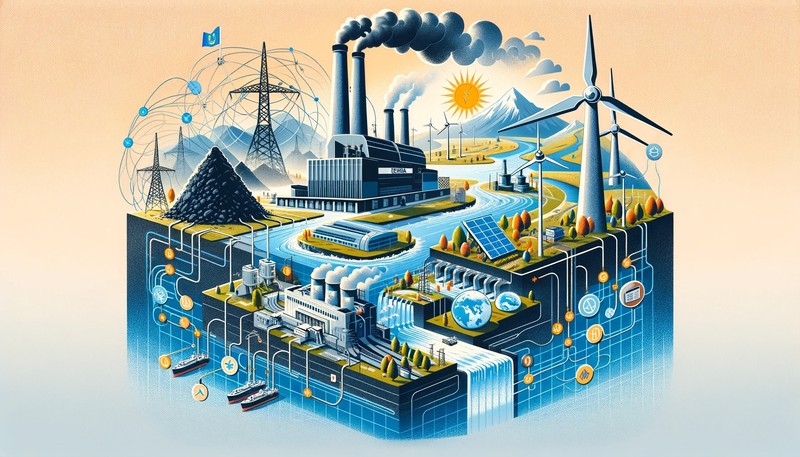Electricity market in Serbia
Energy sources in Serbia
Serbia's energy sector predominantly relies on fossil fuels, with coal playing a central role in electricity generation. The country's abundant lignite reserves are a significant contributor to its energy mix, powering major thermal power plants. However, this reliance on coal poses environmental challenges, aligning Serbia with global efforts to transition to cleaner energy sources.

Hydroelectric power also constitutes a vital part of Serbia's energy portfolio. The Danube and other rivers offer substantial potential for hydroelectric generation, making it a key renewable energy source within the country's electricity mix.
Main source of energy
Coal remains the primary energy source in Serbia, particularly lignite, which is extensively mined and used for power generation. The country's energy infrastructure is heavily dependent on coal-fired power plants, which provide the bulk of its electricity supply. This dependence reflects Serbia's resource availability and historical energy development trajectory.
While coal dominates, efforts are underway to diversify Serbia's energy sources, particularly towards increasing the share of renewable energies like hydro, wind, and solar power, in response to environmental concerns and global energy trends.
Serbia's energy market and regional connectivity
Serbia is not a member of the European Union, but it is actively involved in regional energy markets and initiatives. Its geographical position enables connectivity with neighboring countries, facilitating cross-border energy trade. This interconnectedness is crucial for energy security and market stability in the region.
The country's energy sector is undergoing reforms, aimed at aligning with European standards and increasing its integration with the regional and European energy markets. These efforts include modernizing the energy infrastructure and adopting policies to encourage investment in renewable energy sources.
Challenges and future prospects
Serbia faces challenges in transitioning from a coal-dominated energy sector to a more diversified and sustainable energy mix. Modernizing aging energy infrastructure and increasing the efficiency of energy production and distribution are key areas of focus.
Investment in renewable energy sources is growing, with wind and solar energy projects gaining momentum. These developments are crucial for Serbia's long-term energy sustainability, environmental commitments, and alignment with broader regional energy strategies.
